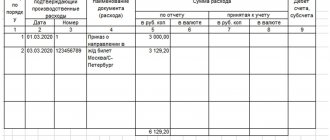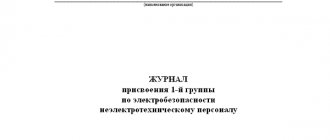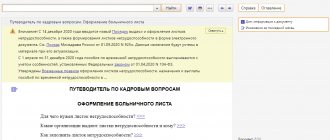The company's balance sheet is one of five forms of financial statements (form No. 1). It is compiled as of a specific reporting date and contains information about the amount of assets and liabilities of the organization, expressed in monetary terms. Many enterprises fill out balance sheet terms in thousands of rubles without decimal places. Large companies display information in millions of rubles without decimal places.
The balance sheet is of interest not only to tax authorities and government statistics departments, but also to the company itself, in particular to management and employees of the analytical department. Based on the data contained in it (the amount of reserves, reserves, capital, financial investments, debt, etc.), short-term and long-term financial and economic planning is carried out.
Which is correct – form 0710001 or form number 1 of the balance sheet
Many accountants call the balance sheet Form 1 , although this term in relation to this reporting document has already lost its relevance. The fact is that back in 2010, the Ministry of Finance canceled its order No. 67n dated July 22, 2003 and issued a new regulatory document - order No. 66n dated July 2, 2010. The appendices to it contain documents, and Form 1 is no longer mentioned in them. Since that time, OKUD coding has been used in business practice, according to which the balance sheet is assigned code 0710001.
Nevertheless, the term “Form 1” is used in everyday life by accounting workers - not so much out of necessity, but out of habit and for convenience.
The balance sheets (Form 1) for 2014 and 2015 are identical, since all changes, as stated, occurred in 2010.
Changes in financial statements and new forms
Form 1 of the balance sheet, valid as of 01/01/2021, with a breakdown of the items, was approved by Order of the Ministry of Finance of Russia dated 07/02/2010 No. 66n. Starting from 2021, the following changes have been made to the accounting reporting forms by order of the Ministry of Finance dated April 19, 2019 No. 61n:
- The unit of measurement in million rubles has been excluded. Indicate all accounting indicators in thousand rubles.
- OKVED has been replaced by OKVED 2.
- Code 385 has been removed.
A field has been added to the balance sheet to display information about whether the company is subject to audit and the name of the company that conducted the audit.
In the financial results report, there have been changes in the tabular part, mandatory for use from the reporting for 2020. But, if desired, taxpayers have the right to use the updated form when preparing the report for 2021.
For more details, see the material “New Forms of Accounting.”
You can download the latest forms of the balance sheet and financial statements using the links at the beginning of our article.
Small businesses have the right to submit simplified financial statements to the tax authorities. A simplified form of accounting is also available at the beginning of the article.
Read about the criteria for classifying a business as small here.
Sections of Form 1 of the Balance Sheet
The balance sheet is made up of assets and liabilities.
Let's look at the procedure for filling out Form 1 of the balance sheet .
The asset consists of 2 sections:
- The first lists non-current assets.
Data on fixed assets, intangible assets, financial investments for long periods (more than a year), etc. are entered here.
- The second indicates current assets.
All assets considered short are entered here. They mean the following indicators: “receivables”, whose repayment period does not exceed a year, inventories, financial investments for short periods (less than a year), etc.
The passive contains 3 sections:
- The first reflects capital and reserves.
This includes data on all types of company capital, which includes, for example, authorized capital, as well as profit before its distribution.
- The second reflects obligations that have a long period of fulfillment (long-term).
This includes all obligations with a maturity period exceeding 12 months.
- The third reflects obligations that have a short period of fulfillment (short-term).
This refers to obligations whose maturity does not exceed one year. This capacity usually includes various loans, business accounts payable, etc.
Each balance line corresponds to a specific code. All of them are listed in Appendix No. 4 to Order No. 66n.
Purpose of form number 1 - balance sheet with breakdown of lines
The very concept of “balance” means “equilibrium”. It symbolizes equality between the company’s property (assets) and the sources of formation of this property (liabilities).
The balance serves several functions. It can be introductory, current, connecting, dividing, rehabilitating, liquidating. Depending on the degree of grouping, a separate, consolidated and consolidated balance sheet is distinguished.
Read about the procedure for liquidating an LLC and drawing up a liquidation balance sheet in the ready-made solution of ConsultatPlus. You will find even more interesting materials if you sign up for a free trial access to K+
The data of its lines are reflected in accordance with subsection. 41–83 Regulations 34n.
Subscribe to our newsletter
Yandex.Zen VKontakte Telegram
Balance sheet items are assessed on a net basis. That is, minus the data reflected in regulatory accounts, such as:
- account 02 - “Depreciation”;
- account 42 - “Margin in retail trade”;
- account 57 - “Reserve for securing financial investments.”
Negative values of balance sheet items are indicated in parentheses.
Form 1 of the balance sheet consists of 5 sections. The debit side of the balance sheet reflects non-current and current assets. The balance sheet credit reflects capital and reserves, long-term and short-term liabilities.
For what periods is data entered into F-1 of the balance sheet?
All balance sheets must be compiled by one of the following dates:
- The reporting date corresponding to December 31 of the year for which the report is being prepared (for example, 2015).
- December 31 of the year preceding the reporting year (for example, 2014).
- December 31 of the year that came before the previous one (for example, 2013).
Thus, the balance sheet is prepared for the reporting year preceding and the year before the previous one.
Sample balance sheet form 1
The form consists of a “header” and two tables: assets and liabilities. Let's fill in each part of the balance sheet sequentially.
Fill out the header:
At the top we indicate on what date the balance sheet is drawn up. We will give an example of the organization Confectioner LLC, which reports for the calendar year 2012.
Accordingly, the balance sheet date is December 31, 2012.
Next, we write the name of the organization, its individual code OKPO, INN, type of activity OKVED, approved by the classifier of statistical authorities.
In the line “organizational and legal form” we write LLC, “form of ownership” - private, also here you need to note the corresponding property codes: OKFS, OKOPF. For LLC - code 65. For private ownership, the corresponding code is 16.
All numerical entries in the balance sheet will be expressed in thousands; accordingly, in the “unit of measurement” line of the balance sheet we will indicate the code 384. For millions of rubles, the corresponding code will be 385.
In the last line of the “header” we indicate the legal address of the organization, that is, the address where it is officially registered.
We fill out the “Assets” table of the balance sheet:
This table consists of two sections: non-current assets and current assets. As mentioned above, to fill out Form 1 we will use the data from the balance sheet.
Opposite each type of asset (in the balance sheet these are called balance sheet items) the corresponding amount is written, rounded (for our case) to thousands of rubles. The first column indicates data as of the reporting date of the reporting period (for our sample, 12/31/2012), the second column shows data as of the end of the previous year (12/31/2011), and the third column shows data as of the end of the year preceding the previous one (12/31/2010). ).
Section I Non-current assets Form 1: (click to expand)
- intangible assets (1110): the residual value is indicated, obtained as the difference between the accounting value of intangible assets (debit 04 “Intangible assets) and accrued depreciation (credit 05 “Amortization of intangible assets”), the data from line 1120 is not taken into account here;
- research and development results (1120): data on completed research and development works (R&D), data for this article is taken from the account. 04 “Intangible assets” sub-account “R&D”;
- intangible and tangible exploration assets (1130-1140): data on search, exploration of mineral deposits, as well as on the equipment used for this.
- fixed assets (line 1150): we also indicate the residual value obtained as the difference between the accounting value of fixed assets (debit account 01 “Fixed Assets”) and accrued depreciation (credit account 02 “Depreciation”);
- profitable investments in tangible assets (1160): data on fixed assets accounted for in account 03 “Income-generating investments in tangible assets” are also determined by their residual value.
- financial investments (1170): the organization’s financial investments for a period of more than 12 months are indicated (composed of debit 58 “Financial investments” and debit 55 “Special accounts in banks” subaccount “Deposits”);
- deferred tax assets (1180): the balance of account 09 “Deferred tax assets” is taken;
- other non-current assets (1190): all other non-current assets that were not reflected in previous articles are indicated.
- Total for section I (1100): the values of lines 1110-1190 are summed up.
Section II Current assets form 1:
- inventories (1210): all inventories available to the enterprise are taken into account (data relating to materials, raw materials are taken: account 10 “Materials”, 15 “Procurement and acquisition of material assets”; related to production: 20 “Main production”, 21 “ Semi-finished products of own production", 23 "Auxiliary production", 28 "Defects in production", 29 "Service production and facilities"; relating to goods and finished products: 41 "Goods", 42 "Trade margin", 43 "Finished products", 44 “Sales expenses”, 45 “Goods shipped”, as well as 97 “Deferred expenses”;
- VAT on acquired assets (1220): the balance of account 19 “VAT on acquired assets” is indicated, that is, the VAT that was presented by suppliers but not accepted for deduction;
- accounts receivable (1230): the amount of debt of counterparties to the organization, data is taken from accounts that record relationships with various counterparties: suppliers (account 60), buyers (account 62), personnel (70, 71, 73), tax office and PF (68 and 69), founders (75), other counterparties (76);
- financial investments (1240): investments for a period of less than 12 months;
- cash and cash equivalents (1250): all funds of the enterprise in rubles (account balance 50 and 51), foreign currency (account balance 52), checks, letters of credit (account balance 55 for subaccounts “Checks”, “Letters of Credit”);
- other current assets (1260): all other current assets that are not reflected in the previous lines are indicated;
- total for section II (1200): the sum of the values of lines 1210-1260.
Balance (1600): the data of lines 1100, 1200 are summed up.
We fill out the “Liabilities” table of the balance sheet, form 1:
The liability table of Form 1 consists of three sections: capital and reserves, long-term liabilities, short-term liabilities.
Section III Capital and reserves:
- authorized capital (1310): credit balance of account. 80 “Authorized capital”;
- own shares (1320): debit balance of account. 81 “Own shares (shares)”;
- revaluation of non-current assets (1340): if the organization revalued intangible assets and fixed assets, then the amount by which the value of non-current assets increased (credit balance account 83 “Additional capital”);
- additional capital without revaluation (1350): credit balance of account. 83 minus the amounts specified in line 1340);
- reserve capital (1360): if the organization creates reserve capital from retained earnings, then this data is reflected in this line (debit 82 “Reserve capital”);
- retained earnings (uncovered loss) (1370): data is taken from account 84 “Retained earnings (uncovered loss”).
- Total for section III (1300): the sum of the values of lines 1310-1370.
Section IV Long-term liabilities:
- borrowed funds (1410): loans to an organization for a period of more than 1 year (loan 67 “Settlements on long-term loans and borrowings”);
- deferred tax liabilities (1420): credit 77 “Deferred tax liabilities”;
- estimated liabilities (1430): credit 96 “Reserves for future expenses”, the period for fulfilling these obligations is over 1 year;
- other liabilities (1450): all liabilities not reflected above for a period of more than 1 year are indicated;
- total for section IV (1400): the sum of the values of lines 1410-1450.
Section V Current Liabilities: (click to expand)
- borrowed funds (1510): loans with a maturity of less than 1 year (loan 66), as well as long-term loans with a repayment period of less than 1 year (loan 67);
- accounts payable (1520): debt to suppliers (account 60), customers (62), personnel (70, 71, 73), budget (68 and 69). founders (75), other counterparties (76) for a period of less than 1 year;
- deferred income (1530): data from account 98 “Deferred income” (credit balance);
- estimated liabilities (1540): loan 96 “Reserves for future expenses”, maturity period less than 1 year;
- other liabilities (1550): all other short-term liabilities with a maturity of less than 1 year that are not reflected above are indicated;
- total for section V (1500): sum of lines 1510-1550.
Balance (1600): sum of line values 1400, 1500.
Upon completion of the balance sheet form 1, the values of lines 1700, 1600 must match. And this is logical. After all, liabilities are the sources of asset formation; each accounting entry (accounting entry) is made simultaneously as a debit to one account and a credit to another. If you have any discrepancies when filling out form No. 1, then you need to look for an error in accounting. The task is painstaking and long, but there is no other way out.
See here for the procedure for filling out a balance sheet for small businesses. In this article you will find a sample of filling out Form 2, here for Form 3, and here for Form 4.
in .xls format
(approved by Order of the Ministry of Finance of the Russian Federation dated July 2, 2010 No. 66 (as amended by Order of the Ministry of Finance of the Russian Federation dated October 5, 2011 No. 124n)
Balance sheet form 1 - sample
F-1 balance sheet is presented on our portal . Using his example, you can familiarize yourself with the data that falls into the form we are parsing.
Similar articles
- How to draw up a balance sheet using the simplified tax system?
- We draw up a balance sheet for an enterprise in the form of an LLC
- When is the balance sheet submitted - reporting period?
- Rules for filling out form No. 3 for the balance sheet
- Balance sheet for 2021 form
What is Form 2 Balance Sheet?
Form 2 of the balance sheet is the same Statement of Financial Results.
The purpose of the report is to show users the nature of the organization’s profit generation in the current year and compare it with the same period last year, which makes it possible to assess the company’s performance.
The indicators of the form lines are systematized and grouped in accordance with the provisions of PBU 9/99 “Income of the organization” and PBU 10/99 “Expenses of the organization” based on data from accounts, accounting and their subaccounts.
The procedure for classifying income and expenses as ordinary or additional activities is determined by the enterprise itself and is enshrined in the order on accounting policies.
All indicators are reflected in the report on an accrual basis, that is, in the reporting period when they were carried out, regardless of the fact of payment. Expense items, taxes, losses reflected in the report are indicated in parentheses.
If there is a need for a more detailed decoding of individual indicators that the company considers significant, additional lines are entered into the report.
Form 2. Statement of financial results
When preparing a statement of financial results, the same rules apply as when creating a balance sheet. Another thing is that here it is necessary to carry out calculations very carefully to reflect the net profit after tax indicator. This indicator must be identical to the organization’s income tax return. They must be the same, otherwise the Federal Tax Service may apply penalties. Accounting statements forms 1 and 2 (filling sample) are presented below:
- Sample of filling out Form 1 (balance);
- Sample of filling out form 2 (report).
You can also download the form (Form 2 of financial statements):
- Balance sheet;
- Report form.
Similar articles
- New forms of financial statements in 2021
- Accounting statements for 2021 under the simplified tax system
- Financial statements in TOGS: what is it?
- Composition of financial statements 2021 for small businesses
- Accounting calendar for 2021 - reporting
Balance sheet - Form 1. From 2021
The balance sheet is a reporting form that reflects the state of the assets and liabilities of an enterprise in monetary terms as of a specific date. The balance sheet contains generalized data about the financial condition of the enterprise. The balance sheet form was approved by the Ministry of Finance of the Russian Federation in order to regulate the financial statements of organizations (Form 1 according to OKUD 0710001).
The edition begins on May 27, 2018
The deadline for submitting the balance sheet for 2021 is March 31, 2019.
The information contained in the balance sheet contains data on capital, investments, the amount of resources and material assets. This is necessary information for management and the analytical department, facilitating the preparation of effective activity planning.
The balance sheet consists of two sections - assets and liabilities. The assets section contains information about the resources of the enterprise, which is divided into two parts - current and non-current assets. The balance sheet liability reflects the sources of resource formation and consists of three parts, which present liabilities (long-term and short-term), capital and reserves. Balance sheet lines show the total amount of items. Amounts are indicated in thousands (millions) of rubles and in whole numbers.
The balance sheet is prepared by the accounting department of the enterprise and signed by the manager. The balance form is filled out manually or using computer programs.
When drawing up a balance sheet, you need to fill in the date of compilation, the name of the company, its details and types of activities, unit of measurement, location of the enterprise, and reporting date. When filling out balance sheet items, it is necessary to take into account the fact that all of them must be documented; offsetting between assets and liabilities is also not allowed; the balance sheet data at the beginning of the reporting period must correspond to the data at the end of the previous period. The balance sheet shows the results of the company’s activities in the reporting period (profit, loss or “zeros”).
The balance is prepared, as a rule, for the reporting calendar year, and the interim balance for the quarter. There is also an opening balance sheet when creating a new legal entity and a liquidation balance sheet when liquidating an enterprise.
The balance sheet is submitted to the tax authorities for control within the time limits established by Russian legislation. Responsibility for the accuracy of the data provided and provision within the established time frame rests with the management of the companies.
Accounting: forms 1 and 2 - who submits
All organizations maintain accounting records, and entities that maintain simplified accounting can use simplified forms of reporting forms. According to paragraph 4 of Art. 6 of Law No. 402-FZ, such enterprises include:
- small firms (including micro-enterprises) included in the SME register - these include companies with an average staff of up to 100 people. and an annual income of no more than 800 million rubles;
- non-profit organizations (NPOs);
- participants of the Skolkovo project.
Simplified Form 1 and Form 2 of the enterprise imply a generalized grouping of data, which is recommended in Appendix 5 to Order No. 66n. But subjects have the right to develop and use their own forms.
Clause 5 Art. 6 of Law No. 402-FZ provides a list of organizations for which simplified methods of accounting and reporting are not available, incl. These are enterprises whose reporting is subject to mandatory audit, public sector employees, non-profit organizations with the functions of a foreign agent, bar and notary chambers, etc.
Form 1 and Form 2 of financial statements
Forms 1 and 2 of financial statements are the main reporting forms - these are the balance sheet and the income statement. Not a single set of reporting documentation for any company can do without them.
- A balance sheet is a set of indicators of a company’s performance as of the reporting date (about the residual value of fixed assets, cash balances in accounts and in cash, accounts payable and receivable, etc.);
- An income statement is data about revenues, expenses and profits for a reporting period of time.
These forms are supplemented by other related reports (capital flow, cash flow, etc.). The information contained in them explains and details the data reflected in Form 1 and Form 2 of financial statements.
Forms 1 and 2 are present in accounting reports compiled for any period (month, quarter, year). For example, the minimum set of financial statements for the 1st quarter of 2021 (if the company prepares interim accounting statements by decision of the owners or for other reasons) must necessarily include both forms. At the same time, such a reporting set can be supplemented with detailed explanations (if there is a need for them).
Both reports have a unified form approved by order of the Ministry of Finance of the Russian Federation dated July 2, 2010 No. 66n.
Financial statements: forms 1 and 2 - what are these reports
Data from forms 1 and 2 are the main components of financial statements:
- Form 1 – balance sheet;
- Form 2 – statement of financial results.
Starting with reporting for 2021, all enterprises use accounting forms, approved. By Order of the Ministry of Finance dated 07/02/10 No. 66n as amended by Department Order No. 61n dated 04/19/2019. In the new edition, in particular:
- OKVED code was replaced by OKVED2;
- There is only one allowed unit of measurement left - thousand rubles. (previously it was possible to indicate data in million rubles);
- OKEY code has been corrected.









